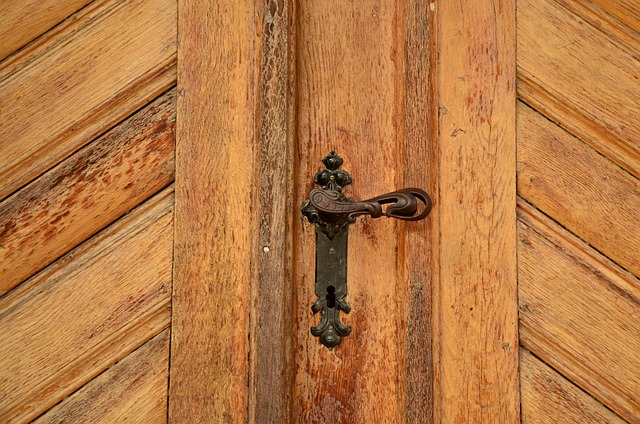Wireless home security systems offer a modern solution for renters, providing remote access via smartphones, easy installation, motion sensors, and smart cameras. These systems enhance convenience, peace of mind, and flexibility for both landlords and tenants, eliminating the need for bulky wiring. Key features include door/window contacts, real-time alerts, and smart locks for proactive monitoring and remote access. Best practices involve strategic sensor placement, wise use of motion detectors, cloud-based platforms, regular firmware updates, and strong encryption for optimal security.
In today’s digital era, upgrading apartment security is paramount, especially for renters seeking peace of mind. Traditional methods often fall short against modern threats, making wireless home security systems a game-changer. This article explores the challenges faced by renters and highlights the numerous benefits of implementing wireless solutions tailored to apartment living. We delve into essential features and provide best practices for a successful upgrade, ensuring tenants can enjoy enhanced safety without compromising comfort or privacy. Discover how wireless technology revolutionizes apartment security.
- Understanding the Challenges of Apartment Security for Renters
- Benefits of Wireless Home Security Systems for Apartments
- Top Wireless Features to Enhance Apartment Security
- Implementation and Best Practices for Upgrading Apartment Security
Understanding the Challenges of Apartment Security for Renters

Many renters face significant challenges when it comes to securing their apartments, often limited by the restrictions and responsibilities involved in renting. Traditional security measures like locks and alarms might not be enough to deter potential intruders or provide peace of mind. This is where wireless home security for renters steps in as a modern solution.
Wireless technology offers a range of benefits, such as remote access via smartphones, easier installation without drilling, and advanced features like motion sensors and smart cameras. These innovations empower tenants to take control of their safety, allowing them to monitor their spaces, receive instant alerts, and even deter would-be thieves from the comfort of their own devices.
Benefits of Wireless Home Security Systems for Apartments

Wireless home security systems have revolutionized apartment living, offering a range of benefits for both landlords and tenants. For renters, one of the key advantages is convenience and peace of mind. With traditional wired systems, installation can be invasive and costly, often involving drilling and running cables through walls and floors. Wireless technology eliminates these drawbacks, as it uses radio frequency signals to connect sensors, cameras, and alarms, making setup quick and hassle-free. Landlords benefit from enhanced property protection without the significant upfront costs of installing a wired system.
Moreover, wireless security systems provide flexibility and scalability. Renters can easily upgrade or adjust their security measures by adding or removing components as needed. This adaptability is especially valuable in dynamic rental markets where tenants may stay for varying periods. The ability to customize security levels ensures a more personalized experience, catering to different needs and preferences without the commitment of long-term wired solutions.
Top Wireless Features to Enhance Apartment Security

For renters looking to boost their apartment’s security, embracing wireless technology offers a modern and efficient solution. Wireless home security systems eliminate the need for bulky wiring, making them ideal for apartments with limited space or unique layouts. Key features like motion sensors, door/window contacts, and remote access via smartphone apps empower tenants to monitor their surroundings proactively. These sensors detect unusual activity in real-time, alerting residents of potential issues, such as unauthorized entries or intrusions.
Additionally, integrating smart locks into a wireless security system adds another layer of protection. With just a tap on a mobile device, renters can lock and unlock doors remotely, ensuring that only authorized individuals gain entry. This feature is particularly beneficial for situations where tenants need to grant temporary access to service providers while maintaining peace of mind.
Implementation and Best Practices for Upgrading Apartment Security

Implementing a wireless home security system is an excellent way to enhance apartment security, especially for renters looking to protect their belongings and peace of mind. The first step is assessing the property’s needs and existing infrastructure. Many modern systems utilize Wi-Fi or Bluetooth connectivity, taking advantage of existing network setups. This seamless integration ensures that installation is straightforward, with minimal hassle or additional wiring.
Best practices include ensuring comprehensive coverage by strategically placing sensors for doors, windows, and even individual drawers or cabinets if desired. Motion detectors should be used wisely to avoid false alarms while still providing effective monitoring. Additionally, cloud-based security platforms offer remote access and real-time alerts, empowering users to monitor their apartments from anywhere via smartphone apps. Regularly updating firmware and keeping the system’s encryption strong are crucial for maintaining optimal wireless home security for renters.
Upgrading apartment security with innovative wireless features offers a comprehensive solution for renters, enhancing peace of mind and safety. By leveraging wireless home security systems, apartment communities can address common challenges and provide an added layer of protection. With the right implementation and best practices, these advanced technologies become powerful tools to safeguard residents and their belongings, fostering a secure environment in today’s digital era. Wireless home security for renters is not just a trend; it’s a necessary step towards smarter, safer living spaces.
